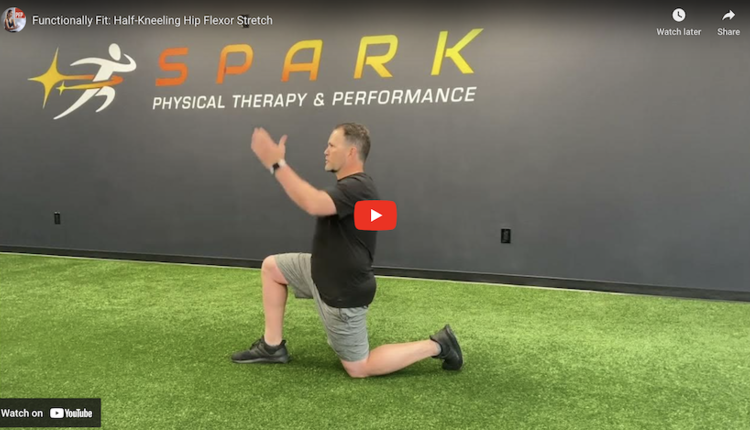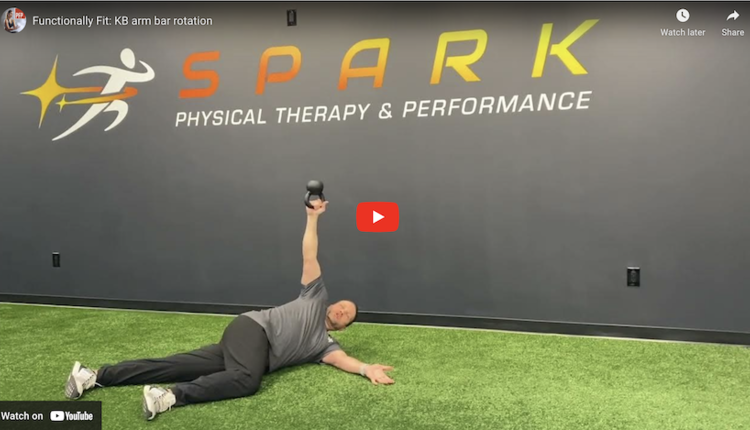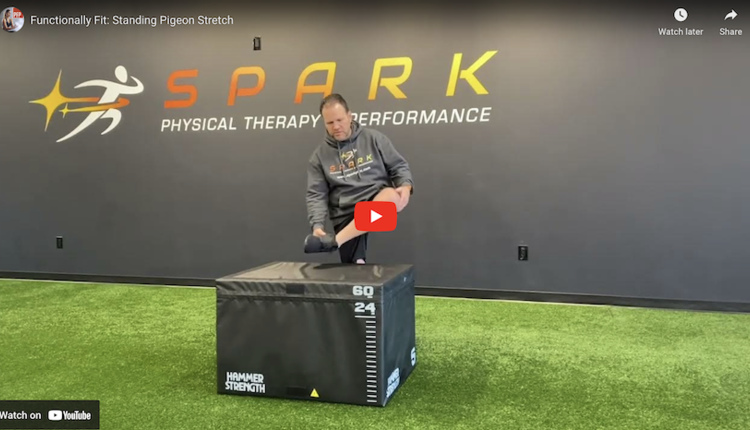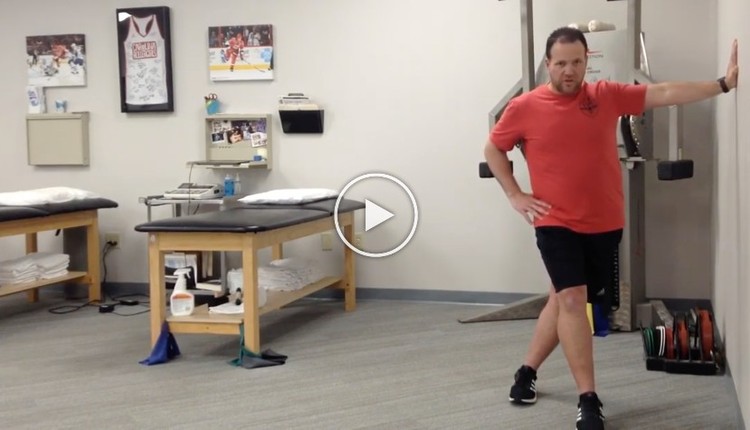Poor dynamic hip stability and lower extremity asymmetry is a common issue among clients I see. I often find asymmetry with ankle dorsiflexion in my clients. This along with poor dynamic hip stability and quadriceps weakness contributes to anterior knee pain or altered movement patterns that may lead to overuse injuries or more serious knee injuries with pivoting/cutting/jumping sports. This reaching exercise is designed to improve ankle mobility and dynamic strength/stability in the lower extremity.

Execution: Position the right foot on a sliding disc, while standing in an upright position. Grasp a stationary object to maintain balance. Next squat down on the left leg while simultaneously sliding the right leg forward and away from the body. Slide forward as far as the leg will allow provided there is no frontal place valgus (medial) collapse or loss of balance. Pause, and then re-turn to the start position. Perform 10 repetitions and then switch sides.
Always focus on maintaining proper posture and not allowing the knee to cave inward. Do not push through any pain in the ankle, knee or hip.
Progression: you may opt to increase the hold time at the bottom of the reach to increase time under tension and facilitate a longer stretch in the ankle. In addition, you can choose to remove upper body support to increase the dynamic challenge of resisting dynamic valgus on the descent.
Application: This exercise will facilitate single leg strengthening, improve dynamic hip stability and improve ankle mobility. The sliding disc allows for better control and offers less risk for loss of balance compared to a free-standing reach. This exercise can serve as a corrective or lower body strengthening activity. Often, I suggest performing foam rolling to the gastroc/soleus complex prior to performing it especially if the primary goal is to facilitate more dorsiflexion. This serves as a got to mobility drill for my runners and clients recovering from ankle sprains or ankle surgery.




















